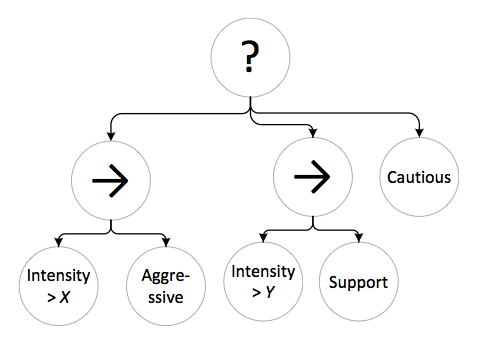Adaptive Companion
In modern digital games, companion or AI buddies co-exists with the player. They are expected to help the player and cooperate with her. But it is rarely the case, in general they tend to do the inverse. For example, if you played Skyrim, you probably experienced the following: trying to sneak around enemies in order to take them one by one or to avoid combat and have your companion run after the enemies to engage combat. The main issue with this situation is that the companion does not respect and take into consideration the player's intentions.
Based of this situation, we came up with an non-expensive and non-intrusive solution. We designed three basic behaviours for a companion, cautious, support and aggressive. Cautious behaviour gives the player enough room to maneuver and if she sees an enemy, she will wait for the player to attack first before attacking. Support behaviour follows the player closely and attacks any enemies at sight. Aggressive behaviour does not follow the player, she is independent and attack enemies at sight.

These behaviours are designed to be use incrementally based of game intensity. This metric measures how the player experiences the game, e.g. as enemies get closer to her the game gets more intense. As the intensity increases the companion switches from cautious to support and to aggressive behaviour (figure above). This allows the level's workload to be better distributed between player and companion.
This interesting behavioural adaptation was shown to be orthogonal to classical dynamic adjustment system although it does not have the drawn back of making no narrative sens for the player, such as Why would my companion has a more powerful weapon than I do? In the case of behavioural adaptivity, when the companion switches behaviour, she is not using unfair mechanics.
For more information please consult publications.